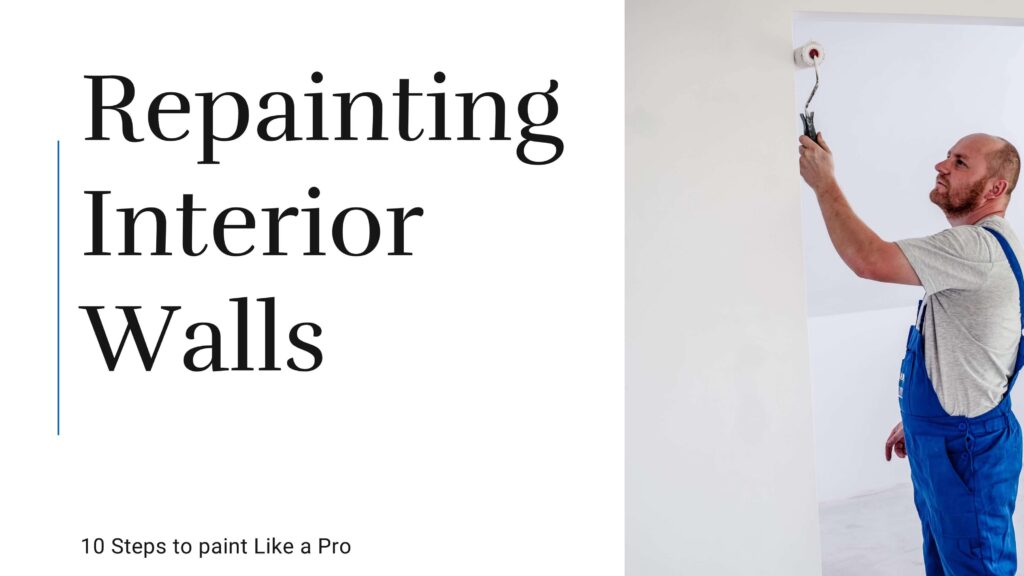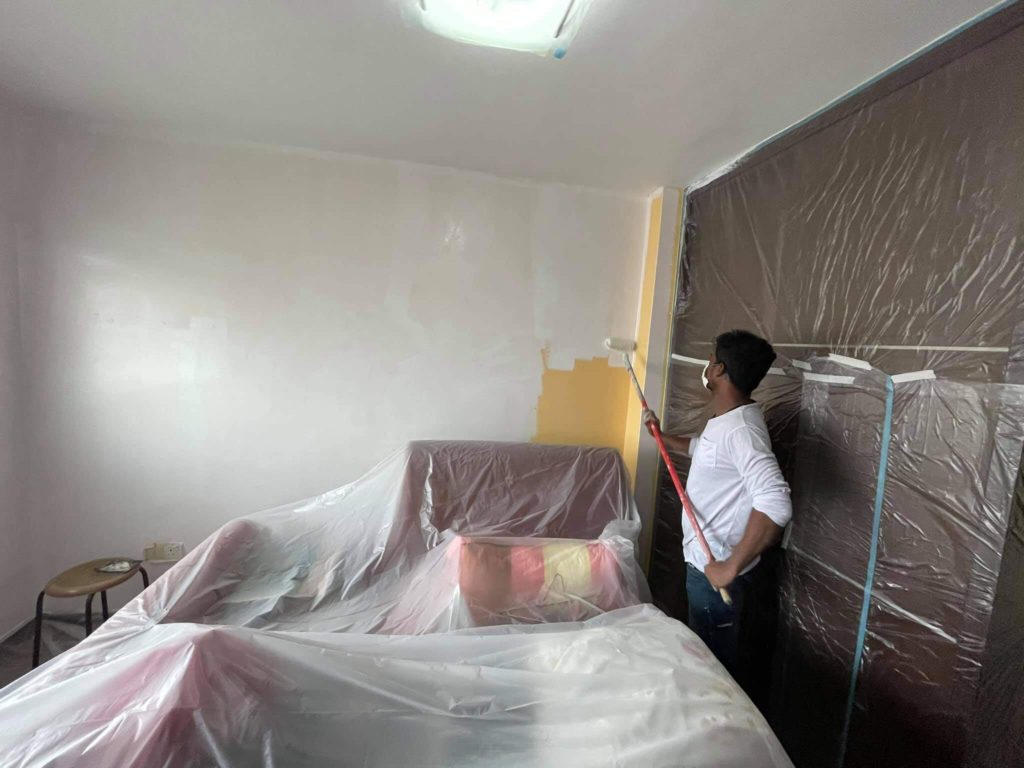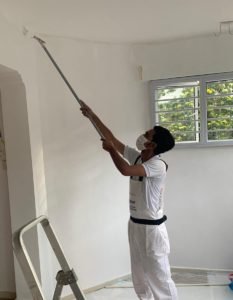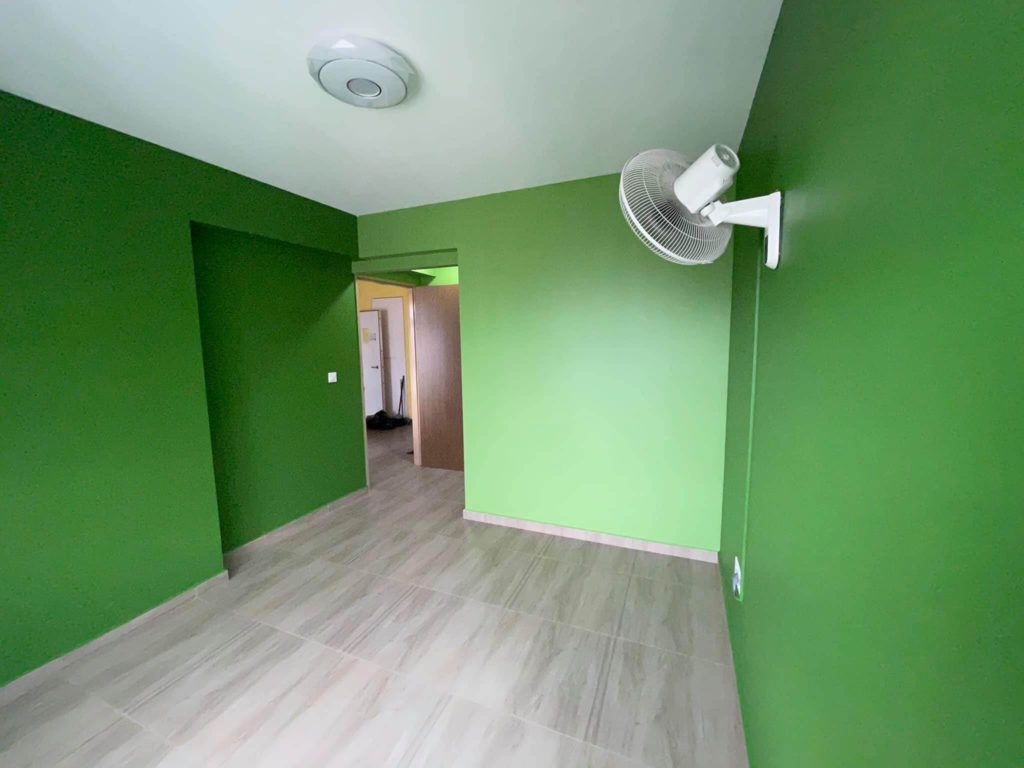
Are you looking to repaint interior walls?
You can either hire a professional painting service company or DIY.
Suppose you want to give your walls a new look. You don’t have to put any pressure on yourself to paint your room. All that is required are some techniques and patience.
Any capable homeowner can paint rooms; all it takes is a little patience, practice, and some helpful advice.
It is a good idea to paint the walls when you plan to do so. It is necessary to buy painting tools and equipment and follow a specific painting method.
Let us learn more about repainting interior walls.
10 Step-by-steps to Repaint Your Interior Walls
There are a few things you should do before painting interior walls.
Before you begin painting, you should be aware of the following procedures.
Refer: 11 Step-by-Step Process for Paint Your Walls at Home
1. Cover Your Properties With a Drop Cloth:
To begin, you must prepare the room to avoid paint stains on the floor and furniture.
Place the furniture in the center of the room and drape a drop cloth over it.

Use the drop cloth on the floor as well.
Clean the wall that has been painted.
2. Repair Your Walls Before Painting:
If you’re going to repaint the wall, make sure it’s free of cracks and mold. Fill the cracks with filler and then remove the molds.

After the fillers have dried, use sandpaper to remove any excess fillers from the wall surface.
We can avoid bumps in the walls by following this procedure.
3. Repainted Walls With Primer:
Primers are one of the best compounds you can use to prevent any cracks and molds in your interior walls. It is beneficial for newly built walls.

This process is required whether the wall has already been painted. If the wall has cracks, you can use a primer to cover them up. In some cases, primer is used to refinish the walls.
Refer: How Does Primer Work When Painting Interiors and Exteriors?
4. Using Primer, Repaint Dark Colored Walls into Light Colors:

It might be time to repaint your walls if they are a dark color and you’d like them to be lighter. The white primer is used to avoid the need for a second coat of paint.
So, you’ve decided to repaint your wall a light color. Simply apply two to three coats of primer to the dark-colored walls.
It will lighten dark colors, allowing you to use any light color on your interior walls.
Refer: What Will Happen If You Don’t Prime Your House Before Painting?
5. Cutting-in the Corners:
Trim the corner walls to make them “cut in.” The “cut-in” technique is useful in painting when the roller has not reached the corners of the walls.

Use the small painting brush for the edges of the wall, ceiling, window, and door frames.
First, apply the paint in the cut-in areas and after that, you can use rollers to paint the walls.
6. Paint Rollers for Interior Walls:
Start painting the walls with the rollers. Use rollers to make V- or W-shaped patterns for the painting work.

Starting at the top of the wall and working your way down, paint the entire wall.
Refer: How to Choose the Best Paint Rollers for Painting Job?
7. Separate the Painted Wall into Small Sections:
Make sections for the painted area. Essentially, the area should be 3 of 3 feet.
Because covering small areas gives the walls a smooth finish.

Keep your distance from the splatters on the walls and floors. It is possible that the splatters on the wall will not be smoothed out.
8. The Amount of Paint in the Rollers:
Instead of fully immersing rollers in paint, use the paint tray to apply paint to rollers.
You must repeatedly touch the roller to the paint until the roller is completely saturated.
Keep in mind that rollers do not drip paint. To remove extra paint from the roller, you must use a paint grid.
9. Rollers Under Pressure:
Use light pressure on rollers when painting the walls. The high pressure on rollers will cause paint drips on the walls.
So, the wall will not give a smooth finish for painting.

When painting, the holding roller position is necessary. When you start painting walls, move the rollers back and forth slowly.
10. Dry the Interior Walls:

After applying the first coat of paint to the walls, allow two to four hours for them to dry.
Then, apply the second coat of paint. This will give your walls a smooth texture.
Conclusion
Suppose you’re planning to paint or hire a painting service to paint for you. It is important to understand the painting job.
You don’t need to know the depth details of the painting work if you employ a painting service company.
On the other hand, DIY painters should learn the techniques and approaches to the painting work.
Before you begin a painting project, this step-by-step process will give you an idea of how to repaint the interior walls.
If you’re looking for professional painting services in Singapore. Meptech Painting Company provides excellent service. Feel free to contact us if you require high-quality expert painting.
Also Read: What is the Difference Between DIY and Professional Painting?
